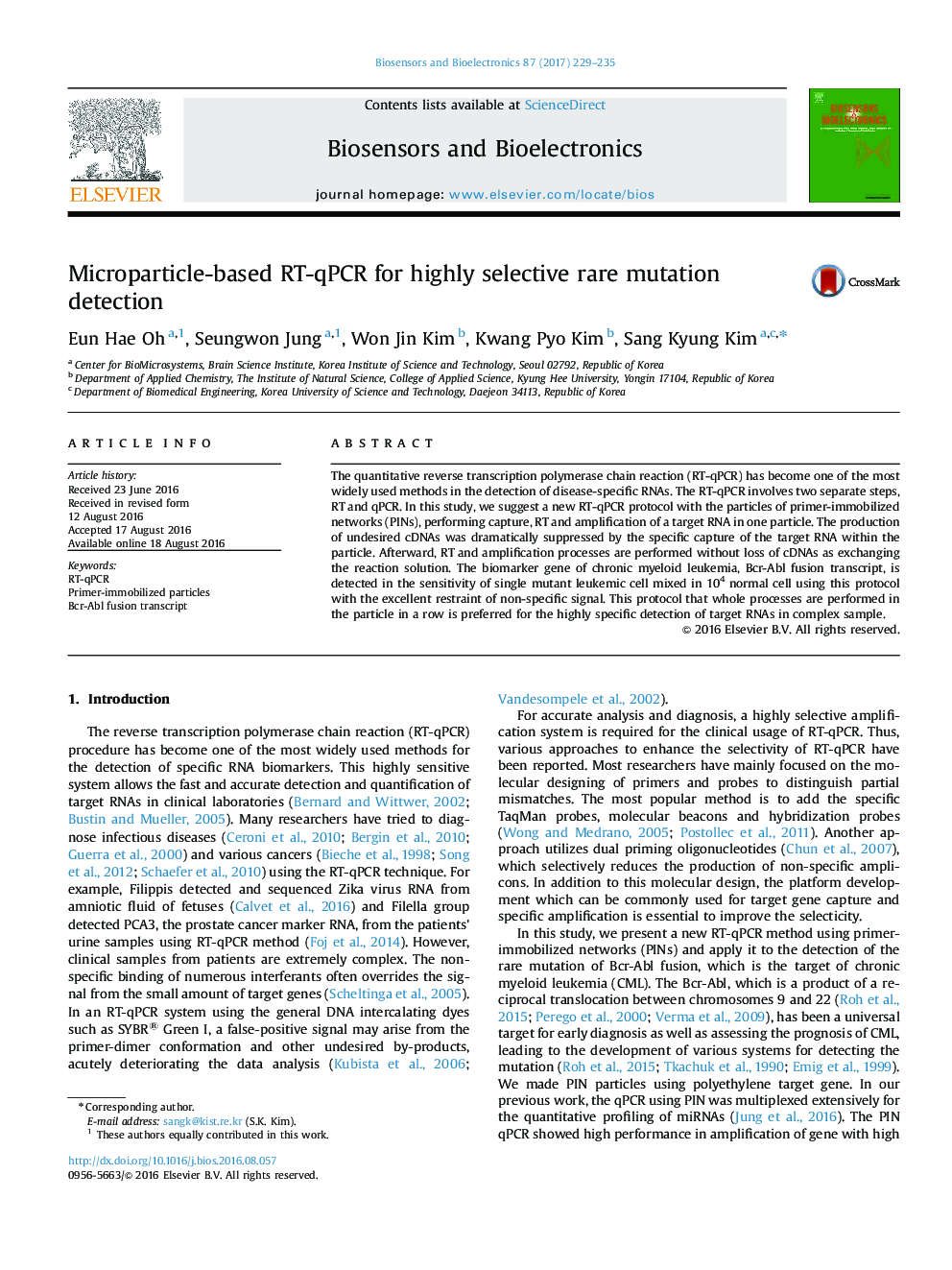| Article ID | Journal | Published Year | Pages | File Type |
|---|---|---|---|---|
| 866183 | Biosensors and Bioelectronics | 2017 | 7 Pages |
●We propose a new RT-qPCR method with the primer-immobilized microparticle for highly selective detection of the rare genetic mutations among RNAs.●Capture, reverse transcription and amplification of target gene were sequentially carried out in same particle.●The production of undesired cDNAs was dramatically suppressed by the specific capture of target RNA.●The amplified target gene can be released from the particle for more accurate analysis such as gel electrophoresis and sequencing.
The quantitative reverse transcription polymerase chain reaction (RT-qPCR) has become one of the most widely used methods in the detection of disease-specific RNAs. The RT-qPCR involves two separate steps, RT and qPCR. In this study, we suggest a new RT-qPCR protocol with the particles of primer-immobilized networks (PINs), performing capture, RT and amplification of a target RNA in one particle. The production of undesired cDNAs was dramatically suppressed by the specific capture of the target RNA within the particle. Afterward, RT and amplification processes are performed without loss of cDNAs as exchanging the reaction solution. The biomarker gene of chronic myeloid leukemia, Bcr-Abl fusion transcript, is detected in the sensitivity of single mutant leukemic cell mixed in 104 normal cell using this protocol with the excellent restraint of non-specific signal. This protocol that whole processes are performed in the particle in a row is preferred for the highly specific detection of target RNAs in complex sample.
